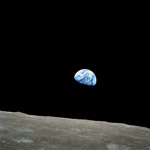
Principles of Sustainability
Chapter 8 - Measuring Sustainability
Part 2 - Environmental, Economic, and Social Carrying Capacity
 On Earth, without change, we face a future of certainty. That certainty will be that eventually, in the human time scale, we will deplete or irreversibly damage, many of the resources we have come to use for our very survival. Our knowledge of this eventuality should inspire the human spirit. As this challenge comes before us, it should inspire us to change, as only change can bring us back into the balance we so desperately need. We need to measure and modify, to build a more sustainable future. The risk of inaction is great.
On Earth, without change, we face a future of certainty. That certainty will be that eventually, in the human time scale, we will deplete or irreversibly damage, many of the resources we have come to use for our very survival. Our knowledge of this eventuality should inspire the human spirit. As this challenge comes before us, it should inspire us to change, as only change can bring us back into the balance we so desperately need. We need to measure and modify, to build a more sustainable future. The risk of inaction is great.
Shortly before his death in 1965, Adlai Stevenson, the US ambassador to the United Nations, said in his last speech: "We travel together, passengers on a little spaceship, dependent on its vulnerable reserves of air and soil; all committed for our safety to its security and peace; preserved from annihilation only by the care, the work, and, I will say, the love we give our fragile craft. We cannot maintain it half-fortunate, half-miserable, half-confident, half-despairing, half-slave to the ancient enemies of man, half-free in a liberation of resources undreamed of until this day. No craft, no crew, can travel safely with such vast contradictions. On their resolution depends the survival of us all."
![]()
Keywords
- carrying capacity
- ecological footprint
- carbon footprint
- water footprint
- breached threshold
- IPAT
- resilience
Suggested Reading
-
Sustaining Human Carrying Capacity: A tool for regional sustainability assessment Ecological Economics, Volume 69, Issue 3, January 2010, Pages 459-468 M.L.M. Graymore, Neil G. Sipe, Roy E. Rickson
- Carrying Capacity Reconsidered: from Malthus' population theory to cultural carrying capacity Ecological Economics, Volume 31, Issue 3, December 1999, Pages 395-408. Irmi Seidl, Clem A Tisdell
(Photo credit: NASA, 1968)
